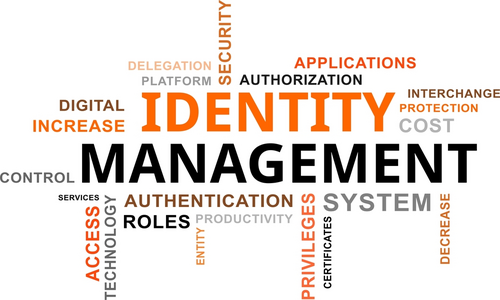In today’s interconnected digital world, data breaches and cyber-attacks are becoming increasingly sophisticated and prevalent. One of the most significant security challenges organizations face is protecting privileged identities, which hold extensive access rights within an IT environment. Privileged Identity Management (PIM) is a critical component of modern cybersecurity strategies. It aims at safeguarding sensitive data, systems, and resources from unauthorized access.

Jump ahead to
Understanding Privileged Identity Management
Privileged Identity Management refers to the practice of securing, managing, and monitoring privileged accounts within an organization’s network. The privileged accounts possess elevated permissions and administrative access, allowing users to control critical systems, applications, and data. These accounts are commonly used by system administrators, IT personnel, and other privileged users to perform essential tasks, such as system configuration, software installation, and data management.
The importance of PIM stems from the fact that if unauthorized users gain access to privileged accounts, they can potentially wreak havoc on an organization’s IT infrastructure. Privileged credentials in the wrong hands could lead to data breaches, service disruptions, and financial losses. To mitigate these risks, Privileged Identity Management solutions aim to control and monitor the usage of privileged accounts. This reduces the attack surface and ensures adherence to security policies.
Components of Privileged Identity Management
- Privileged Account Discovery: The first step in PIM is identifying all privileged accounts within the organization. This process involves scanning the network and systems to locate accounts with elevated permissions.
- Access Control: Once privileged accounts are discovered, PIM solutions enforce strict access controls. This includes implementing the principle of least privilege, granting users only the minimum necessary access required to perform their duties.
- Privileged Session Management: PIM solutions provide a secure platform for privileged users to access systems. These sessions are often monitored and recorded to maintain an audit trail of activities.
- Password Management: PIM solutions typically include robust password management features, ensuring that privileged account passwords are unique, complex, and regularly rotated.
- Multi-Factor Authentication (MFA): Implementing MFA adds an extra layer of security to privileged accounts, requiring users to provide multiple forms of identification before gaining access.
- Privileged Access Monitoring: Continuous monitoring of privileged accounts and user activities helps detect suspicious behavior and potential security breaches in real-time.
Benefits of Privileged Identity Management
Comprehensive Auditing and Reporting:
Privileged Identity Management solutions provide detailed auditing and reporting capabilities. These reports offer insights into privileged account usage, login attempts, and activities performed during privileged sessions. Organizations can use this information for compliance audits, incident investigations, and identifying potential areas of improvement in their security protocols.
Centralized Control and Governance:
PIM solutions centralize the management of privileged accounts, making it easier for administrators to enforce security policies uniformly across the organization. Centralized control also simplifies the process of revoking access when users change roles or leave the organization, reducing the risk of orphaned privileged accounts.
Protection against Insider Threats:
Insider threats, whether malicious or unintentional, pose a significant risk to organizations. Privileged Identity Management helps mitigate these threats by monitoring user behavior and identifying unusual or unauthorized actions performed by privileged users. This proactive approach can prevent potential data breaches from occurring.
Seamless Integration with Existing Systems:
Modern PIM solutions integrate seamlessly with existing IT infrastructure. This makes it easier for organizations to adopt and deploy them without disrupting their current operations. Whether it’s Active Directory, LDAP, or other systems, PIM solutions can work alongside these technologies to provide comprehensive privilege management.
Scalability for Growing Organizations:
As organizations expand and their IT environments grow, managing privileged accounts manually becomes increasingly challenging. Privileged Identity Management solutions are scalable, capable of handling a growing number of users, systems, and applications. This scalability ensures that security measures remain effective even as the organization’s footprint expands.
Real-time Threat Detection and Response:
PIM solutions continuously monitor privileged accounts and user activities in real-time. This proactive monitoring allows for the rapid detection of suspicious behavior or potential security threats. When an anomaly is identified, the system can trigger alerts or take automatic remediation actions, ensuring that threats are addressed promptly.
Safeguarding Cloud Environments:
With the increasing adoption of cloud services, organizations must extend their privileged identity management practices beyond traditional on-premises systems. PIM solutions are designed to secure cloud-based privileged accounts. It ensures that organizations maintain control and visibility over critical resources, regardless of their location.
Protection of High-Value Assets:
Organizations often have high-value assets, such as proprietary data, intellectual property, or financial information. PIM solutions protect these valuable assets by restricting access to authorized personnel only, reducing the risk of data leakage or theft.
Conclusion
In conclusion, Privileged Identity Management is a vital component of modern cybersecurity strategies. It offers a wide range of benefits to organizations seeking to enhance their security posture. From heightened protection against data breaches and cyber-attacks to improved compliance and auditing capabilities, PIM solutions provide a comprehensive approach to managing and securing privileged accounts. By adopting PIM, organizations can establish a robust defense against insider threats. They can also enforce least privilege principles, and ensure that access to critical resources is granted only to authorized individuals. PIM remains an indispensable investment to protect sensitive data, maintain business continuity, and safeguard the trust of customers and stakeholders. To understand in-depth on Privileged Identity Management, pursuing Microsoft 365 Security Administrator Training course is a suitable option.



